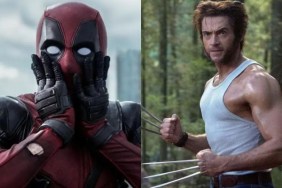
CraveOnline: I love your shootouts in all your various films. Do you have a certain approach that you have to filming a shootout?
Michael Mann: Yeah.
What is your first thought in the process?
When we were shooting Ali we were scouting locations and we came across a fucked up community center in Maputo, Mozambique. No power, no running water, no nothing. The city was in ruins and disarray. We heard this drumming, so we went inside and there was a local neighborhood dance company of about 50 people in this abandoned site, and they were rehearsing a dance.
There were about 20 of us. We just sat there and watched this for about 20 minutes. We actually shot a video of it. I could tell what the story of this tribal dance [was], in the middle of Puto, Mozambique. The choreographer spoke Portugese, and my friend was with me who spoke Spanish and Italian, and we managed to have a conversation through interpreters. I said, “Is this what this is about?” And he said, “Yeah,” and I said, “Why do I know that?” He said, “Because choreography has to have a story at its center.”
“They said, ‘You can’t possibly shoot there’ and I said, ‘Oh yeah?'”
There has to a story to choreography. So to me a fight scene is choreography, and it has to have a story. It’s not just a fight scene. It has to be as choreographed as dance.
When you’re choreographing you also have to be aware of the geography…
The geography suggests the choreography, and vice-versa.
When you’re choreographing do you have a model, or do you prefer to go on set and figure out where everyone would be and where they move?
Kind of both. We were location scouting [for Blackhat], we were on the water, in this little harbor area outside of Hong Kong, and I saw this structure and I said, “What is that?” It was a storm drain that was nearing completion of construction. It looked like a museum for sculpture. It was great. I went in it and they said, “You can’t possibly shoot there” and I said, “Oh yeah?” [Laughs.] We wound up shooting there.
“To me a fight scene is choreography, and it has to have a story. It’s not just a fight scene.”
That changed the writing of what it had been. It had been described as alleyways and some kind of a tunnel, but not really. It was all vague. Then I found that location, and that became the idea, that below the house there was a helical ramp down into a storm drain, and Trang, Chen and Hathaway and Jessup run through the streets and the alleys to outflank him.
You really capture the suspense of that wide, blind corner. I think a lot of people would assume that that wouldn’t be an issue, and you managed to really screw up the good guys in that scene.
The SWAT?
Yeah. What sort of tactics do you look at for that?
For tactics you look at the SWAT team tactics, and it was inherent in the backstory of Kassar that coming through the interminable civil wars in Lebanon – he had a very specific history – that he has acquired close quarters combat skills. Then when he left Lebanon they became a commodity on the market, and there’s a huge Syrian, Lebanese community particularly in Paraguay and Argentina, and he was able to move from one thing to another. And then he hooked up with Sadak. So that’s how we assumed he has the skills he has.
William Bibbiani is the editor of CraveOnline’s Film Channel and the host of The B-Movies Podcast and The Blue Movies Podcast. Follow him on Twitter at @WilliamBibbiani.






